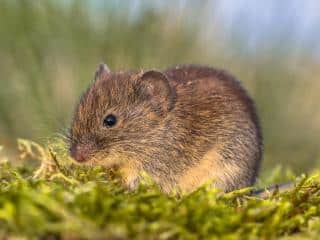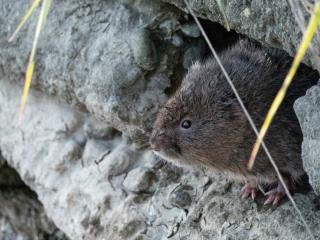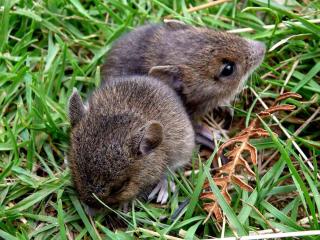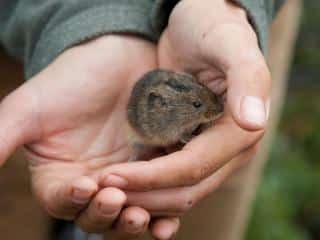

Even if you try your best to be an animal lover, voles still tend to get on your nerves. This short-lived rodent has the annoying habit of turning the ground in your vegetable garden into a vast network of tunnels. And to make matters worse, it often goes unnoticed because, unlike moles and field rats, it doesn’t create mounds. Chewed-up vegetables and damaged flower bulbs are often what alert you to Arvicolinae‘s presence.
Here are some tips to scare it away without causing any damage.
 How do you tell a vole apart from a mouse, field mouse, or shrew? This question may seem trivial, but it is important in the garden. Indeed, not all of these rodents are harmful to your garden
How do you tell a vole apart from a mouse, field mouse, or shrew? This question may seem trivial, but it is important in the garden. Indeed, not all of these rodents are harmful to your garden
For example, the shrew, as an insectivore, is a proud ally of the gardener as it efficiently eliminates many insects such as caterpillars, ticks, and stink bugs, as well as gastropods like slugs and snails. As for the mouse, it is omnivorous and will certainly cause more damage in your shed, cellar, or chicken coop than in the vegetable garden.
Our concern here is the vole: it is a herbivore. It is a rodent with sharp teeth (which grow throughout its life) that feeds on plants, namely vegetable roots, bulbs of certain flowers, seeds, and also fruits, buds, and berries. It can even go after certain vegetables like leek, chard, and chicory.
Additionally, if hungry, it may also include a few chance insect larvae and earthworms on its menu.
 So, how do you recognize it? It is about 4 inches long (10 cm) and has brown to reddish fur. Its tail is as long as its body and is extended by a black line on its back for the most common voles. As for its ears, they are small and pointed. Most often, its belly is white.
So, how do you recognize it? It is about 4 inches long (10 cm) and has brown to reddish fur. Its tail is as long as its body and is extended by a black line on its back for the most common voles. As for its ears, they are small and pointed. Most often, its belly is white.
But the chances of seeing it are minimal!
Indeed, the vole, a rodent from the Apodemus family, is a nocturnal animal. It spends its nights (and sometimes its days depending on the season) digging tunnels in your vegetable garden or your neighbor’s! It rummages for itself and to feed its family of little voles. And since vole is a prolific breeder, the family is large!
And the need for food is even greater! Often, a hole in your vegetable garden might catch your eye. It is the entrance to a tunnel. If you also notice wilted vegetables or nibbled strawberries, there is no doubt. Voles are here!
 And they can really test your patience… Indeed, Mr. and Mrs. Vole mate between March and the end of October and can give birth to four litters a year. Consider that each litter has 5 to 10 babies: you can do the math. Oh, and one more fact: a vole reaches sexual maturity in about two months.
And they can really test your patience… Indeed, Mr. and Mrs. Vole mate between March and the end of October and can give birth to four litters a year. Consider that each litter has 5 to 10 babies: you can do the math. Oh, and one more fact: a vole reaches sexual maturity in about two months.
In short, you may soon be overrun and your vegetable garden soon becomes a minefield, worthy of the largest battlefields…
Although the previous description doesn’t speak highly of voles, these little rodents also have a few positive roles in the garden:
First and foremost, we will set aside all harmful and lethal traps and toxic rodenticides that cause voles to suffer tremendously. Not to mention that chemical products like rat poison can also be harmful to your pets.
 There are ultrasonic repellents that can chase away rodents. They consider these ultrasounds a potential threat. They are quite effective, but they can be expensive. Similarly, anti-rodent cages can capture voles without killing them. You just have to take them somewhere else. But don’t forget that vole families are large, so you’ll have to trap a lot!
There are ultrasonic repellents that can chase away rodents. They consider these ultrasounds a potential threat. They are quite effective, but they can be expensive. Similarly, anti-rodent cages can capture voles without killing them. You just have to take them somewhere else. But don’t forget that vole families are large, so you’ll have to trap a lot!
You can also try:
In addition, pet cats are excellent vole hunters, just like foxes or birds of prey. And cats are easier to attract to the garden!